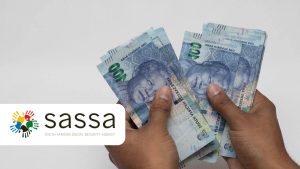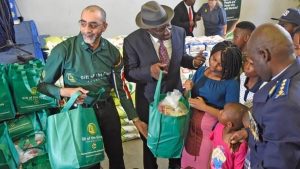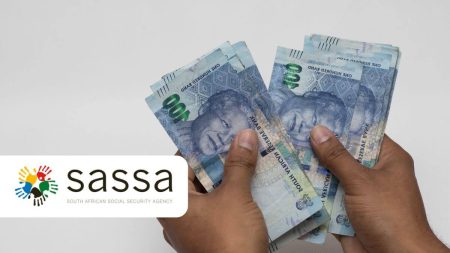January is often a tough month for many South Africans, especially after the festive season. Making your SASSA Grant for January last through the month can seem challenging, but with careful planning and budgeting, you can ensure that your essential expenses are covered.
This guide provides practical advice to help you manage your SASSA Grant for January, meet your needs, and even save for unexpected expenses.
Understanding Your SASSA Grant
The SASSA Grant for January is a lifeline for millions of South Africans, supporting individuals and families in need. The grants include:
- Older Persons Grant: R2,080 per month (R2,100 for recipients aged 75 and older).
- Disability Grant: R2,080 per month.
- Child Support Grant: R500 per child per month.
- Foster Child Grant: R1,120 per month.
- Care Dependency Grant: R2,080 per month.
- Grant-in-Aid: R500 per month.
- War Veterans Grant: R2,100 per month.
Each of these grants is designed to assist with essential living costs. Your SASSA Grant for January should be carefully allocated to maximize its value.
Related: January 2025 SASSA Grant Payment Dates
Steps to Budget Your SASSA Grant for January
1. Calculate Your Income
The first step in managing your SASSA Grant for January is to understand your total income. Add up all the grants you receive, including Child Support Grants if you care for multiple children. Knowing your exact monthly income helps you plan effectively.
2. List Your Essential Expenses
Write down all your unavoidable monthly costs, such as:
- Housing: Rent, mortgage payments, or shared contributions.
- Utilities: Electricity, water, and other household services.
- Groceries: Food and household essentials.
- Transportation: Taxi fares, bus tickets, or petrol costs.
- Healthcare: Medications and doctor’s visits.
- School Expenses: Fees, uniforms, and stationery.
Your SASSA Grant for January should first cover these essential expenses before anything else.
3. Prioritize Critical Needs
Not all expenses are equally important. Use your SASSA Grant for January to address critical needs like food, housing, and utilities. Avoid spending on non-essentials until your basic requirements are covered.
4. Track Your Spending
Keeping a daily record of your spending helps you stay within your budget. Whether you use a notebook or a free smartphone app, tracking how you spend your SASSA Grant for January ensures that no rand is wasted.
5. Plan for Variable Costs
Some expenses, like electricity and food, fluctuate. Estimate these costs based on previous months and allocate a portion of your SASSA Grant for January to cover these variations. This planning prevents shortfalls during the month.
Tips to Stretch Your SASSA Grant for January
- Cook at Home: Preparing meals at home is more affordable than buying takeaways. Plan meals around cost-effective ingredients like rice, beans, and seasonal vegetables.
- Shop Smart: Take advantage of sales, buy in bulk, and choose generic brands over expensive branded items.
- Limit Unnecessary Expenses: Avoid impulse purchases and cancel subscriptions or services you don’t use.
- Save for Emergencies: Set aside at least R50 to R100 from your SASSA Grant for January as an emergency fund. This cushion can help with unexpected costs.
- Utilize Free Community Resources: Many NGOs and local organizations provide free food parcels, school supplies, and other forms of assistance.
Sample Budget for SASSA Grant for January
Here’s an example of how you might allocate an Older Persons Grant of R2,080 for January:
| Expense | Amount (R) |
|---|---|
| Housing | 800 |
| Utilities | 300 |
| Groceries | 500 |
| Transportation | 200 |
| Healthcare | 150 |
| Savings | 100 |
| Miscellaneous | 30 |
This budget ensures that the SASSA Grant for January covers essential needs while leaving room for emergencies or variable costs. Adjust the amounts based on your personal circumstances.
Related: How SASSA Beneficiaries Can Protect Their Personal Information in 2025
Planning for Back-to-School Costs
If you have school-going children, part of your SASSA Grant for January should go toward school-related expenses. Budget for:
- School fees.
- Uniforms.
- Stationery and textbooks.
January can be expensive due to these back-to-school costs, so prioritize them early in the month to avoid last-minute financial stress.
Additional Support Options
If your SASSA Grant for January is not enough to cover all your expenses, consider these alternatives:
- Community Assistance: NGOs and churches often provide food parcels or financial support.
- Government Programs: Check for additional grants or subsidies.
- Debt Counselling: If you’re overwhelmed by debt, professional advice can help you manage repayments.
Key Takeaways
Budgeting your SASSA Grant for January is about prioritizing essentials, cutting unnecessary spending, and saving where possible. By tracking your expenses, planning for variable costs, and seeking additional support when needed, you can stretch your grant to last the entire month.










